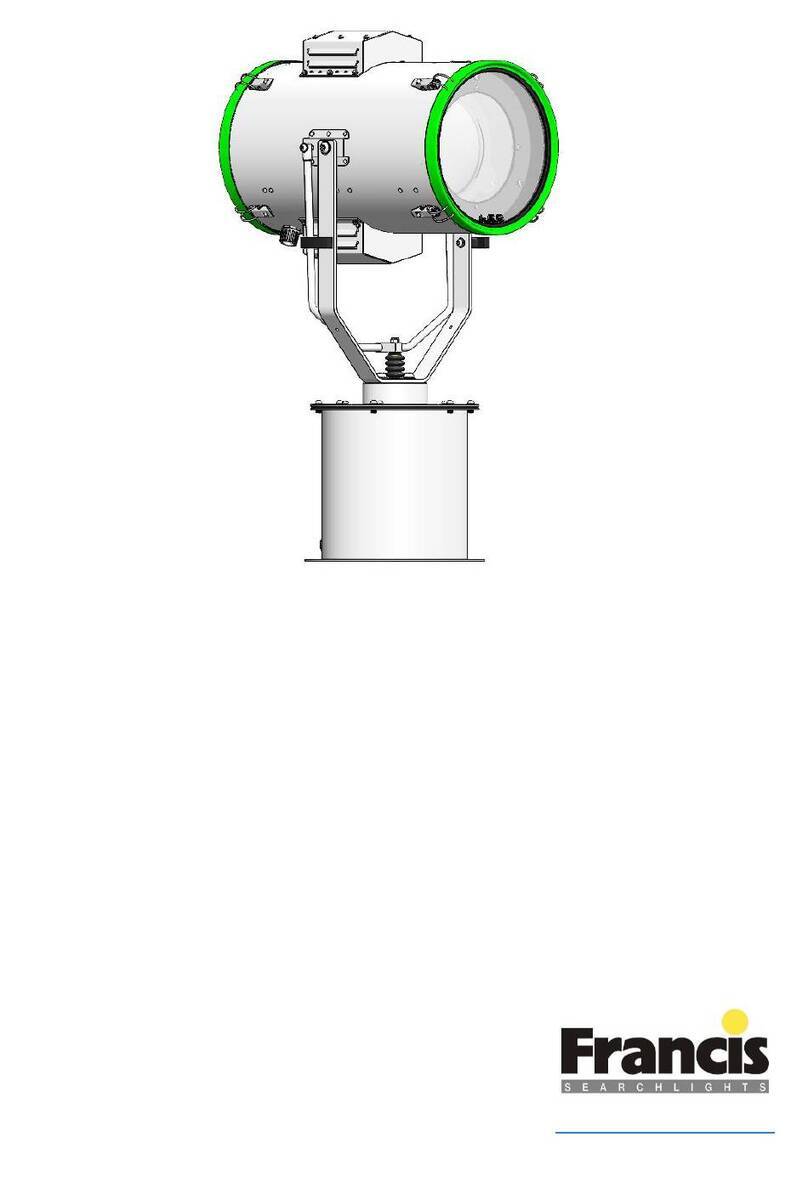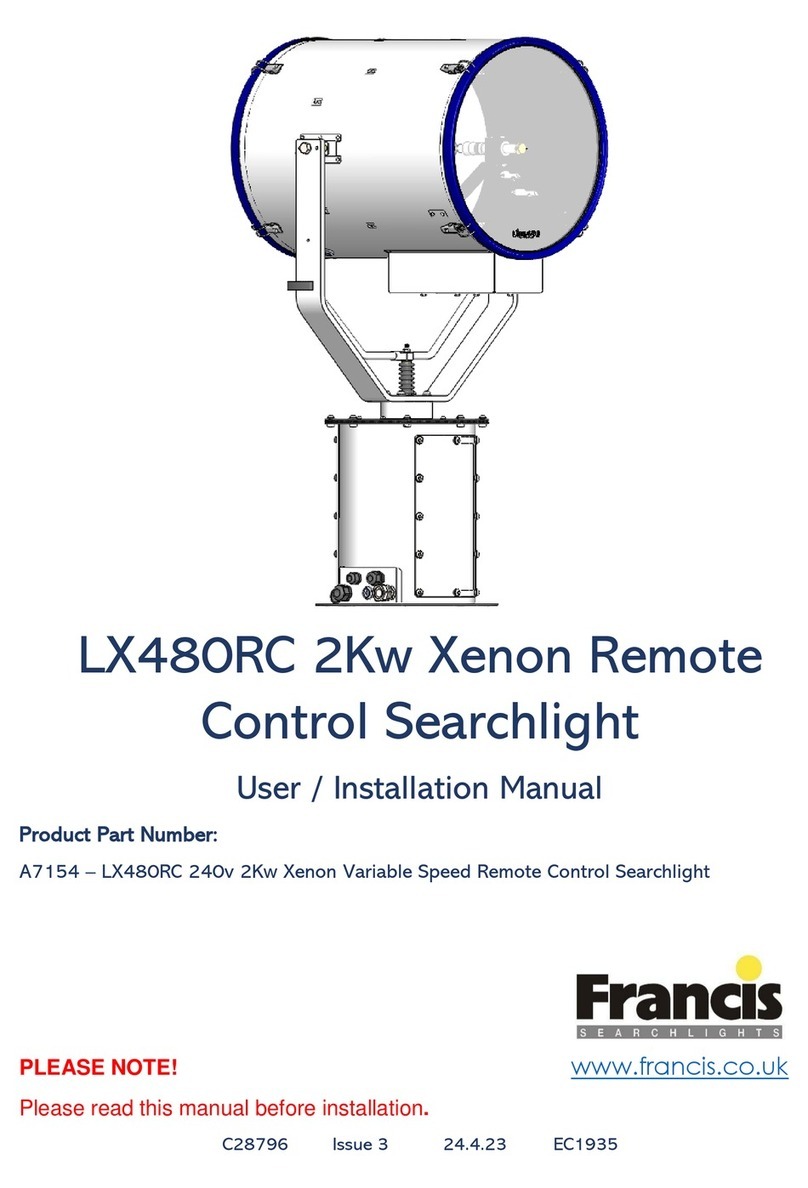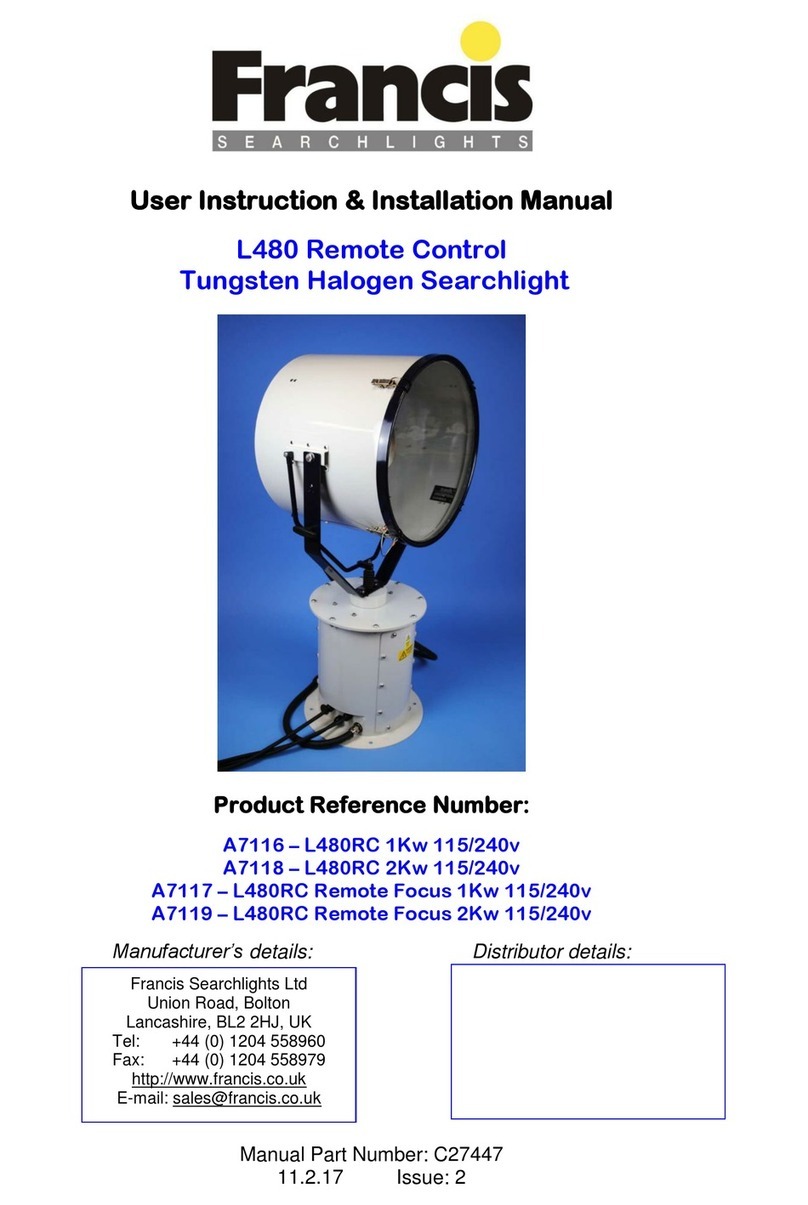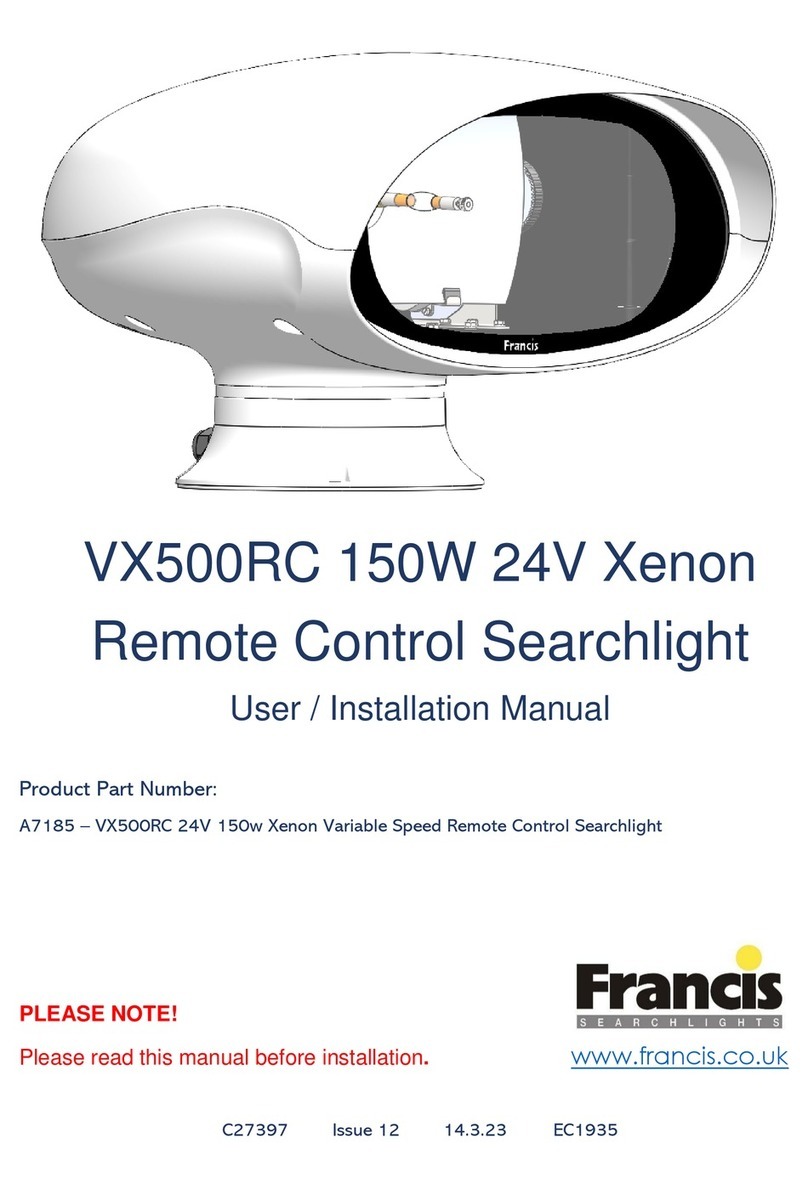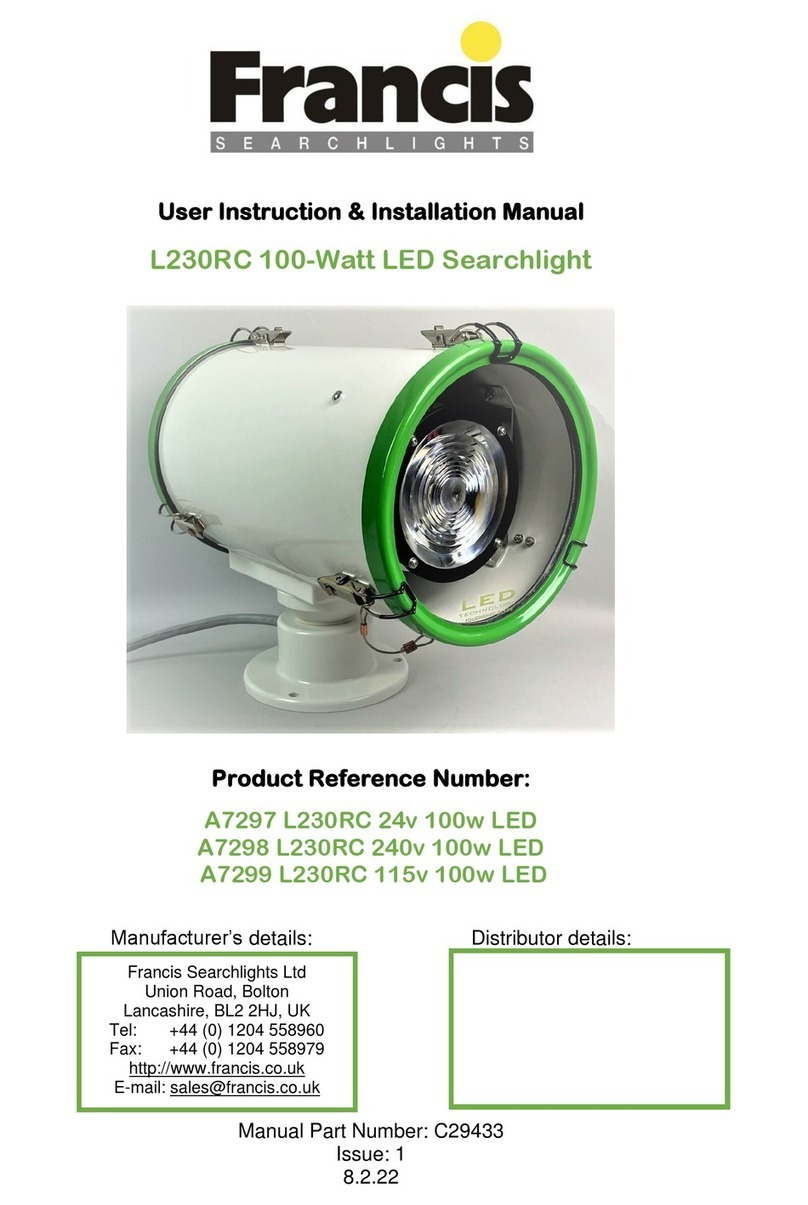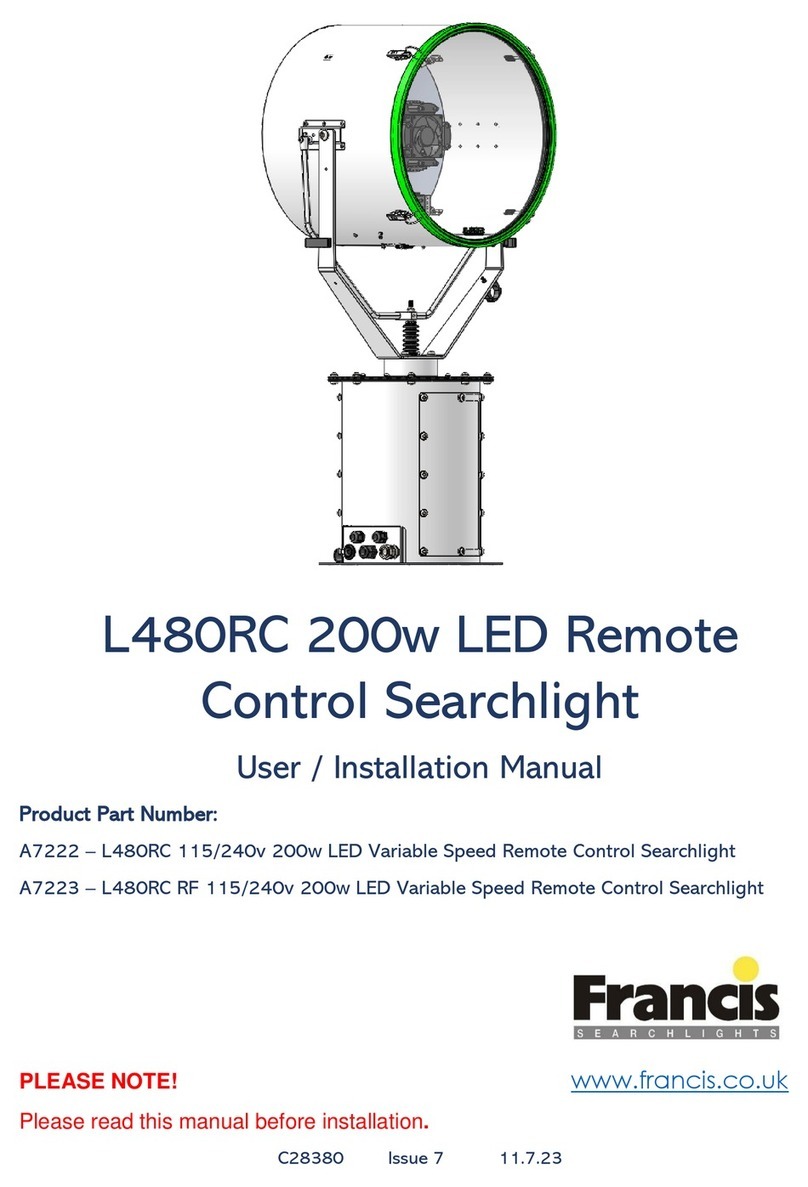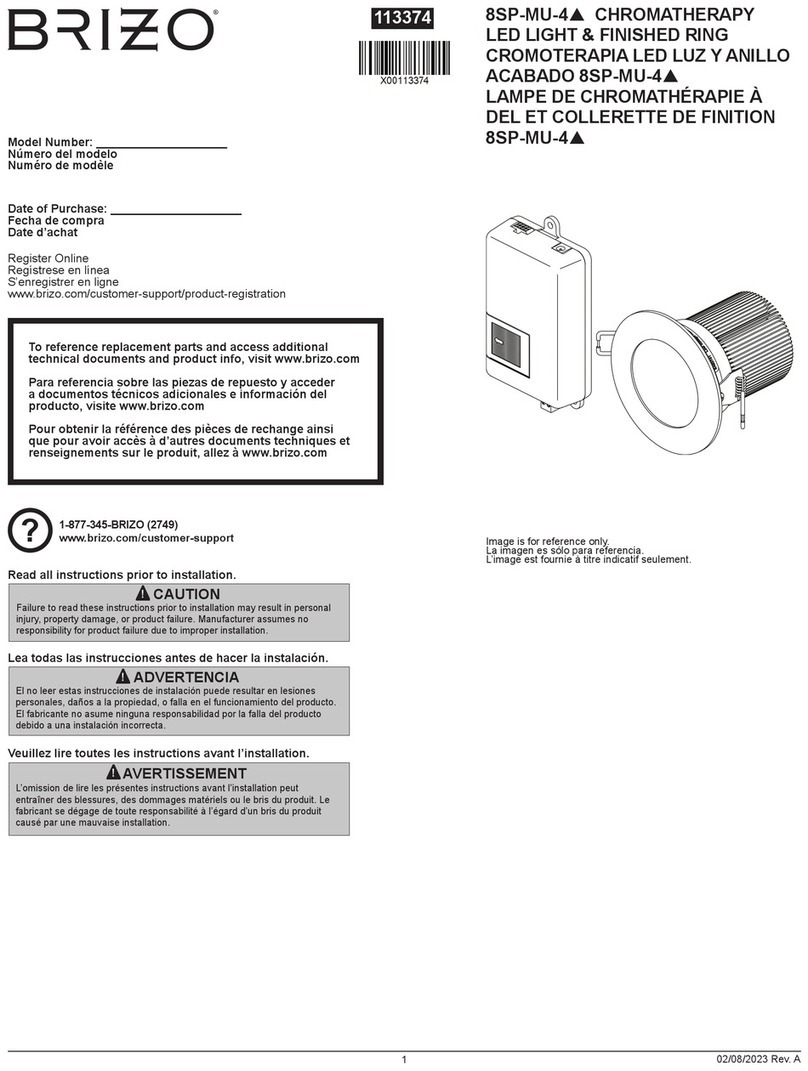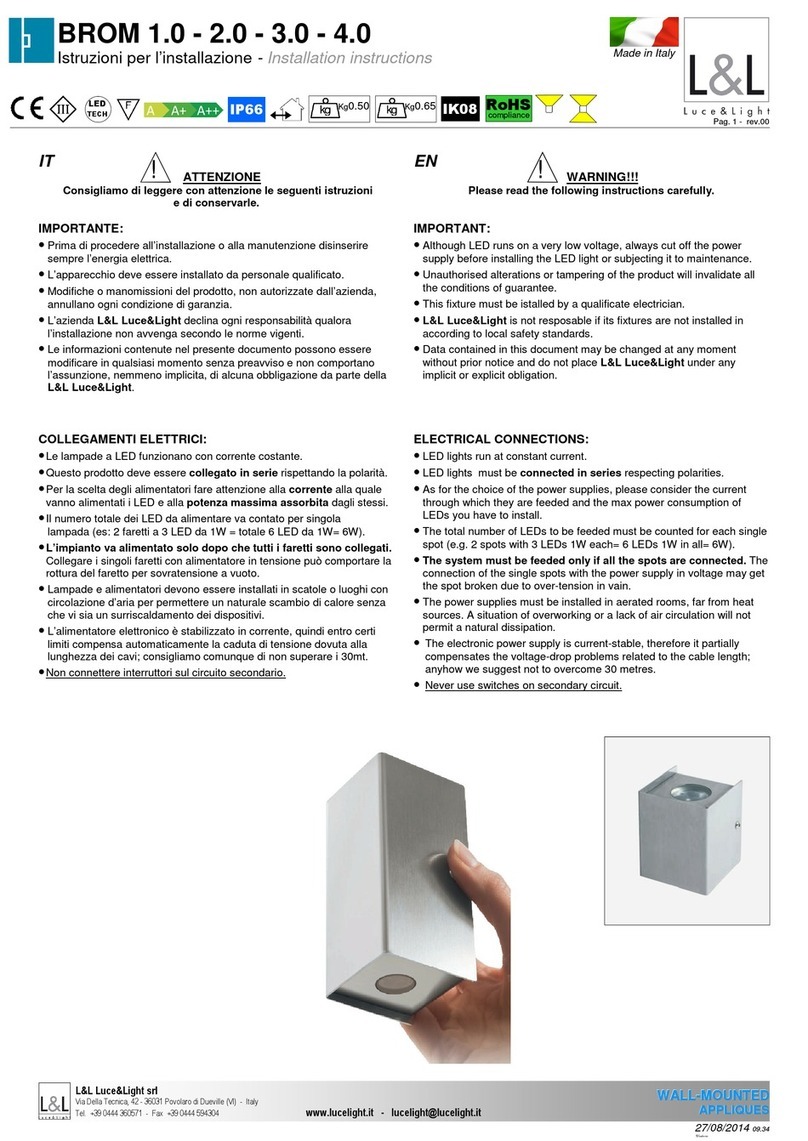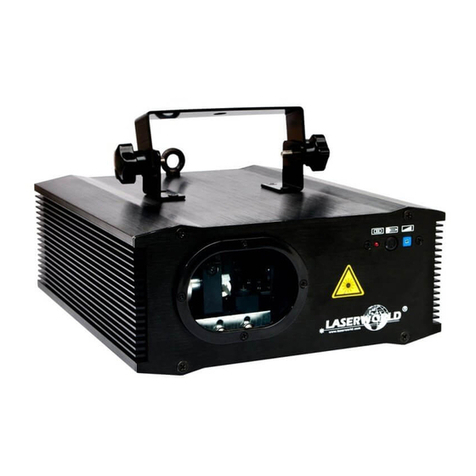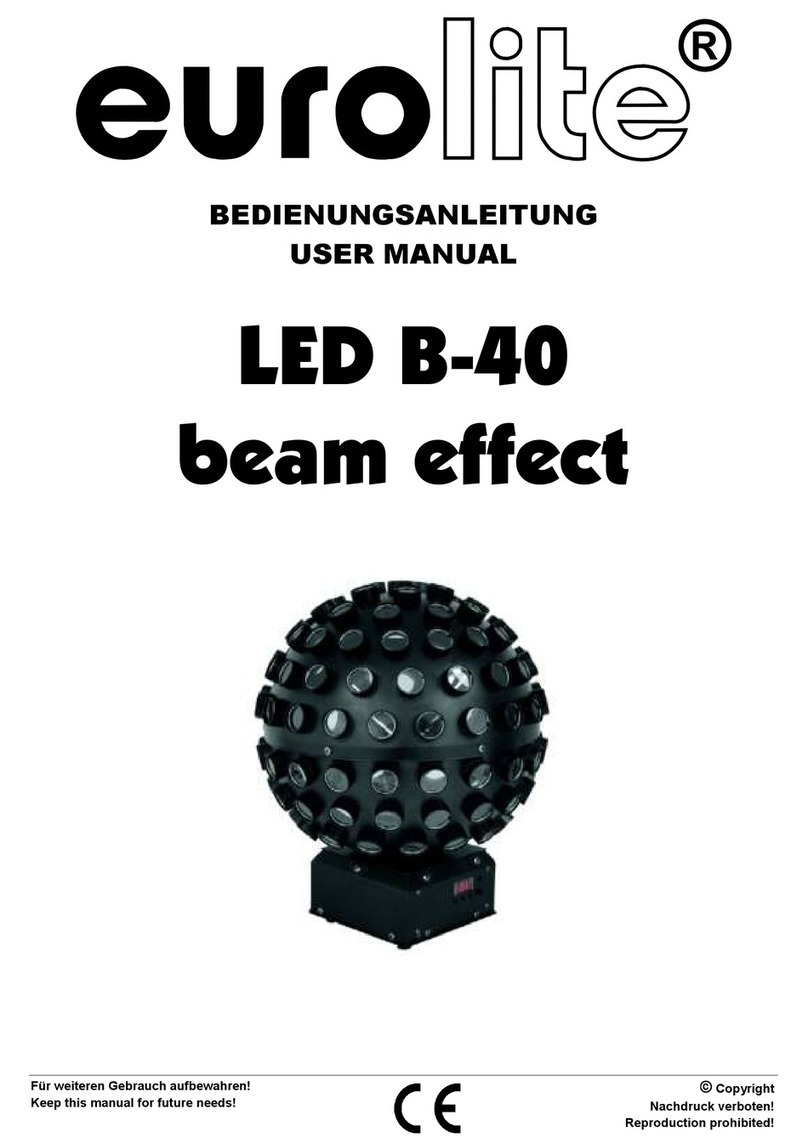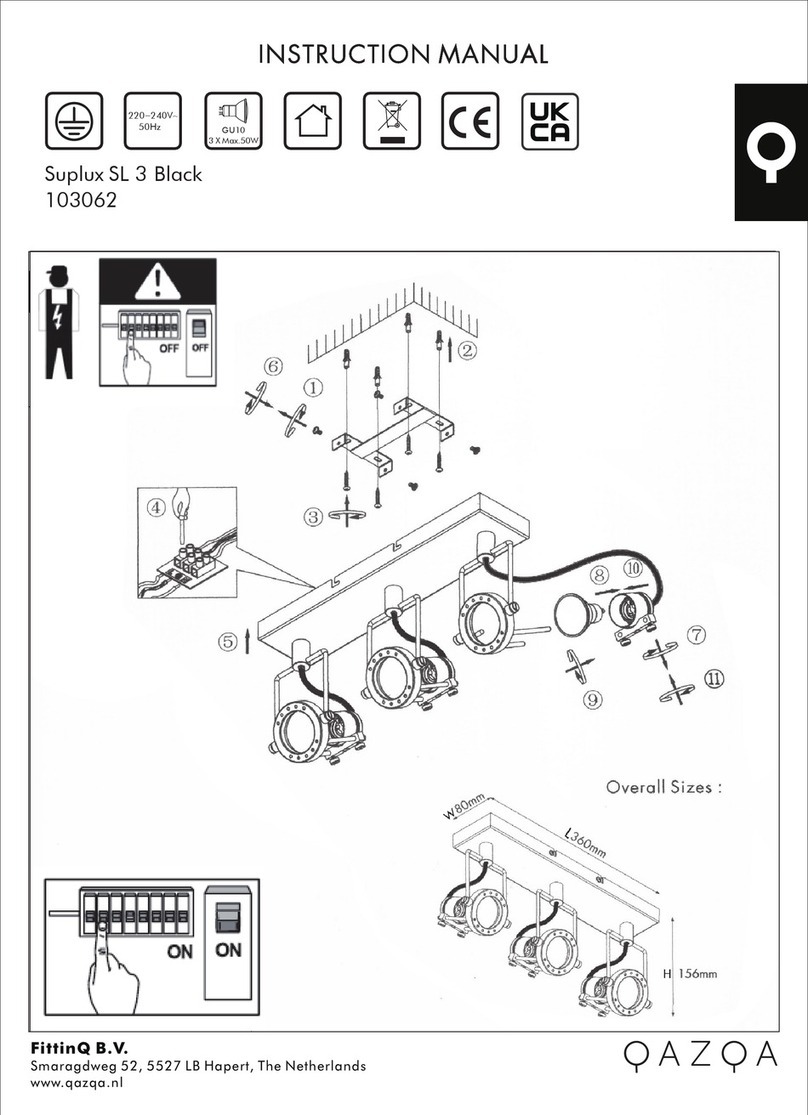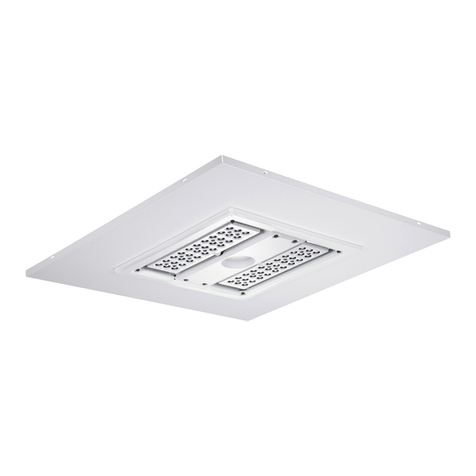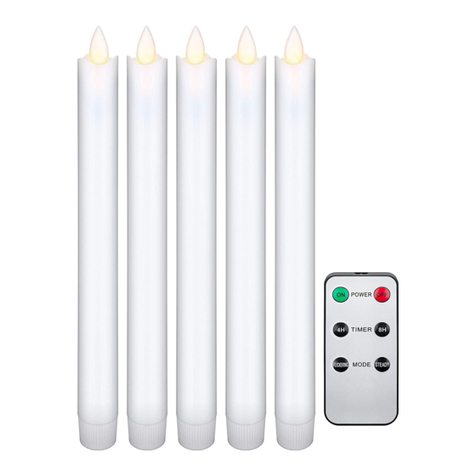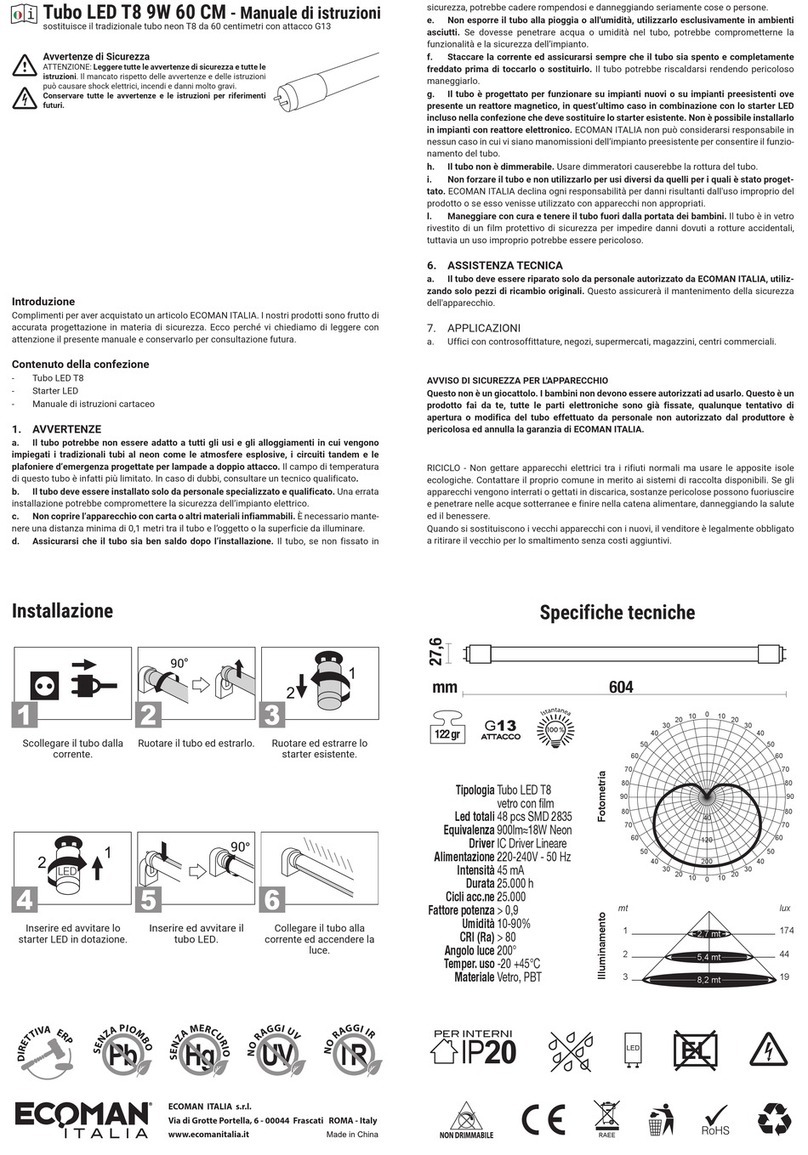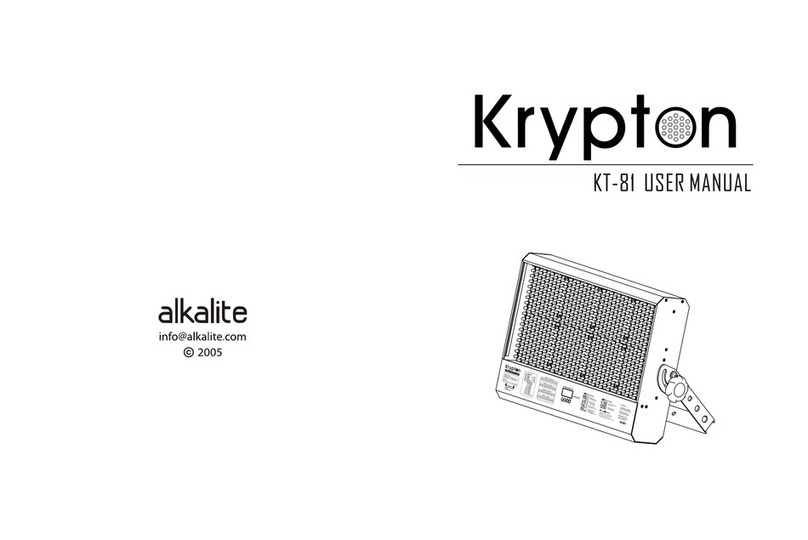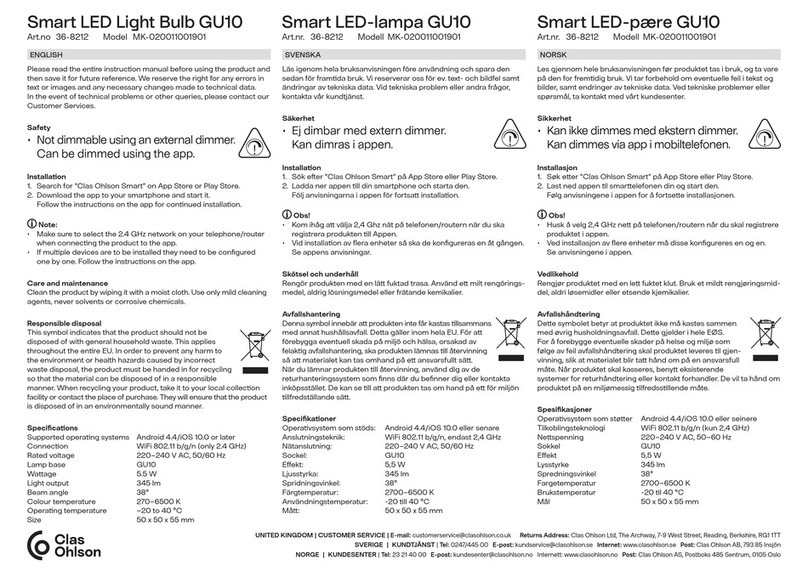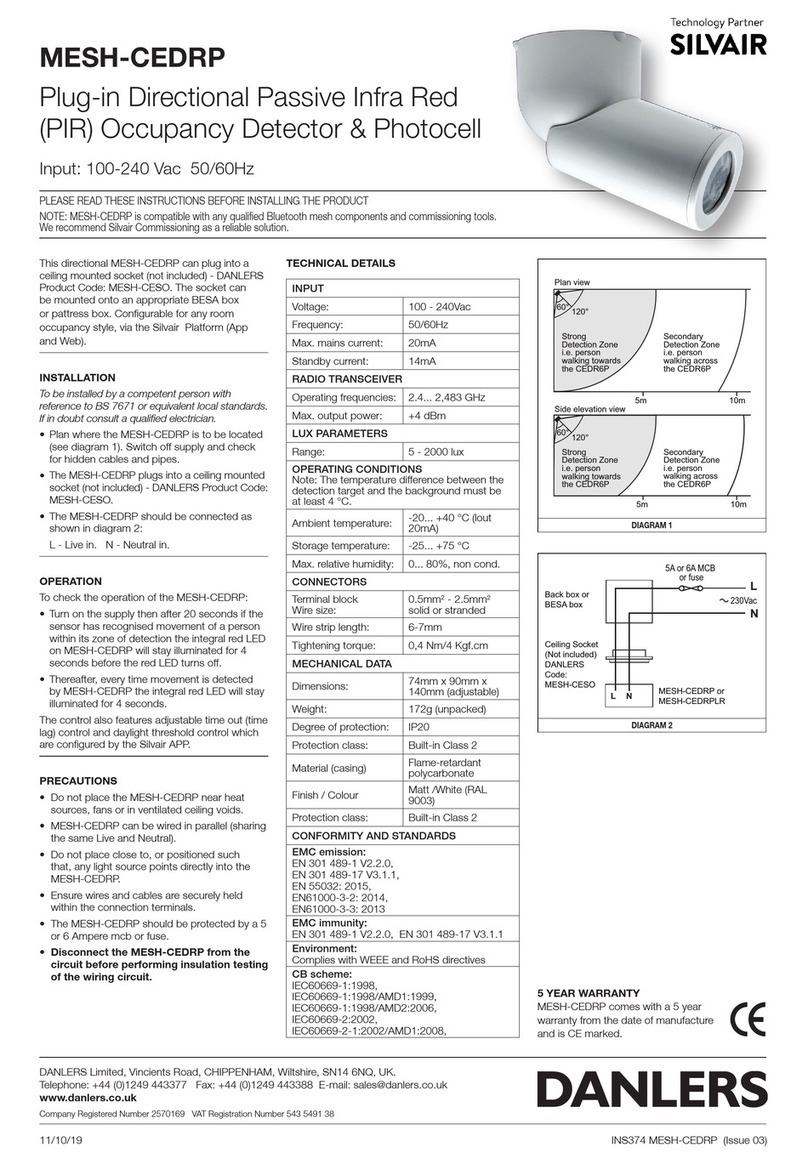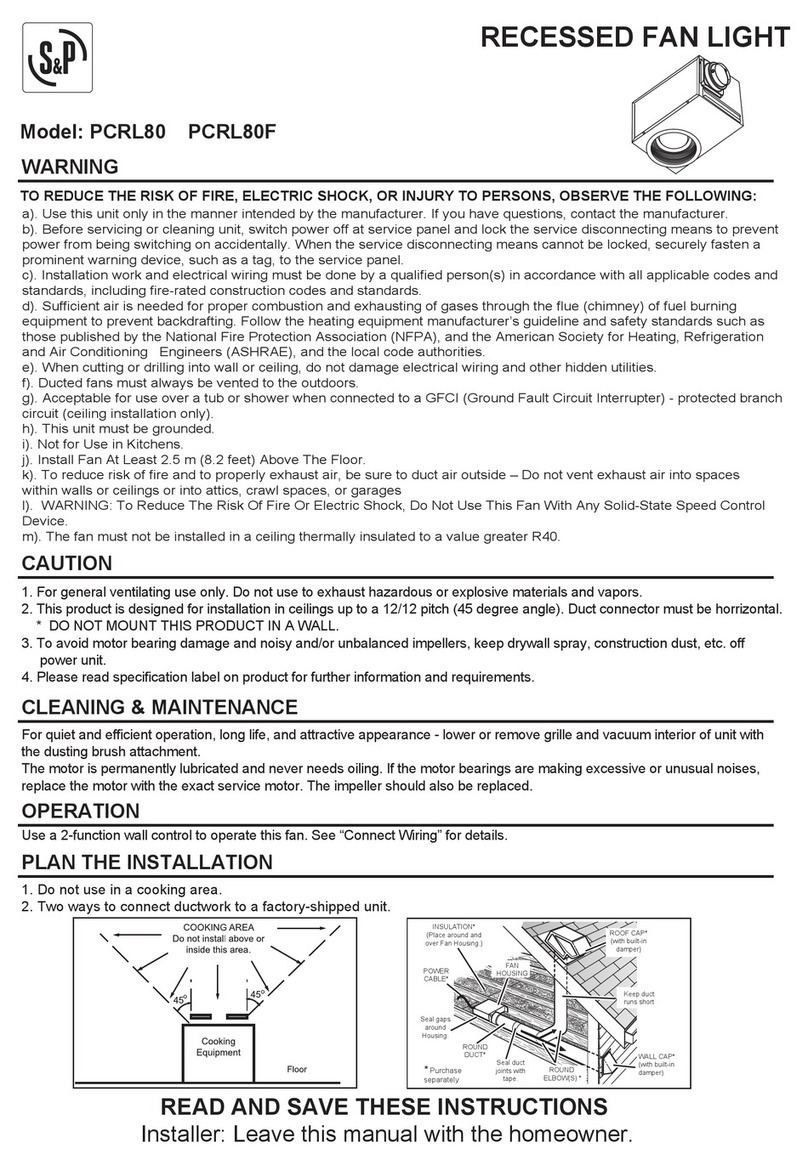6 –Start-up and Operating
When fitting the lamp
•Always isolate the equipment from the supply when inserting a lamp.
•Eye protection must be worn when handling lamps that have been removed from their
packaging materials. The protective jacket should not be removed from the lamp for safety
reasons, as there is a remote possibility of the lamp shattering violently, especially if it is
subjected to mechanical shock or vibration.
•Ensure the circuit is suitably fused.
•Ensure the lamp is of the correct power rating and type.
•Before inserting the lamp ensure that all contacts are clean. Contacts must be renewed at
the slightest sign of corrosion. Sanding or filing down corroded areas is not recommended
as this will only make the conducting surface between the pin and lamp holder smaller, thus
causing the lamp to overheat.
•The inert gas used in Xenon lamps are under a pressure of several bar even when the bulb
is cold. FOR SAFETY REASONS THE LAMP MAY ONLY BE INSERTED INTO THE
LAMPHOUSE WITH THE PROTECTIVE JACKET FITTED.
•Ensure that the spring contacts firmly surround the pins on the cap of the lamp. Do not
apply unnecessary force when tightening the screws.
•After inserting the lamp, ensure that there is sufficient axial play in the lamp holder. The
lamp must be capable of unimpeded expansion when it warms up to operating temperature.
Mechanical forces must not be applied to the fused quartz bulb.
•Electrical leads must be arranged in such a way that there is a sufficient air gap
(approximately 40mm) between them and the lamp house, to prevent flashovers from the
ignition voltage. All flexible leads must have strain-relieving clamps.
•Before putting the lamp into service for the first time, check the polarity of the electrical
connections. INCORRECT POLARITY WILL CAUSE IMMEDIATE DESTRUCTION OF
THE LAMP.
Notes:
•Xenon lamps are designed for dc operation only. The dc current may only be varied within
the limits of the current control range. Xenon lamps operate best at rated current; over the
life of the lamp, the current may be increased to its maximum value to compensate for loss
of light. The output of the lamp can be reduced by operating the lamp at minimum current,
but this does not prolong the life of the lamp.
•For safety reasons, lamps should be replaced once they reach the end of their average
lamp life, and not later than 1.25 times their average lamp life. After this time there is an
increased risk of the lamp exploding.
•The anode (positive cap marked ‘+’) must be on top when the lamp is inserted in the vertical
position. If the anode is incorrectly inserted the arc will be unstable, the bulb will blacken
more quickly, and the lamp will prematurely fail.
•The HT lead from the high voltage terminal of the Ignitor, must be connected to the cathode
(negative cap marked ‘- ‘). If the lamp is fitted with the wrong polarity, it will be irreparably
damaged after a very short time.
•In all circumstances the lamp manufacturer’s data should be referred to when dealing with
lamps.
